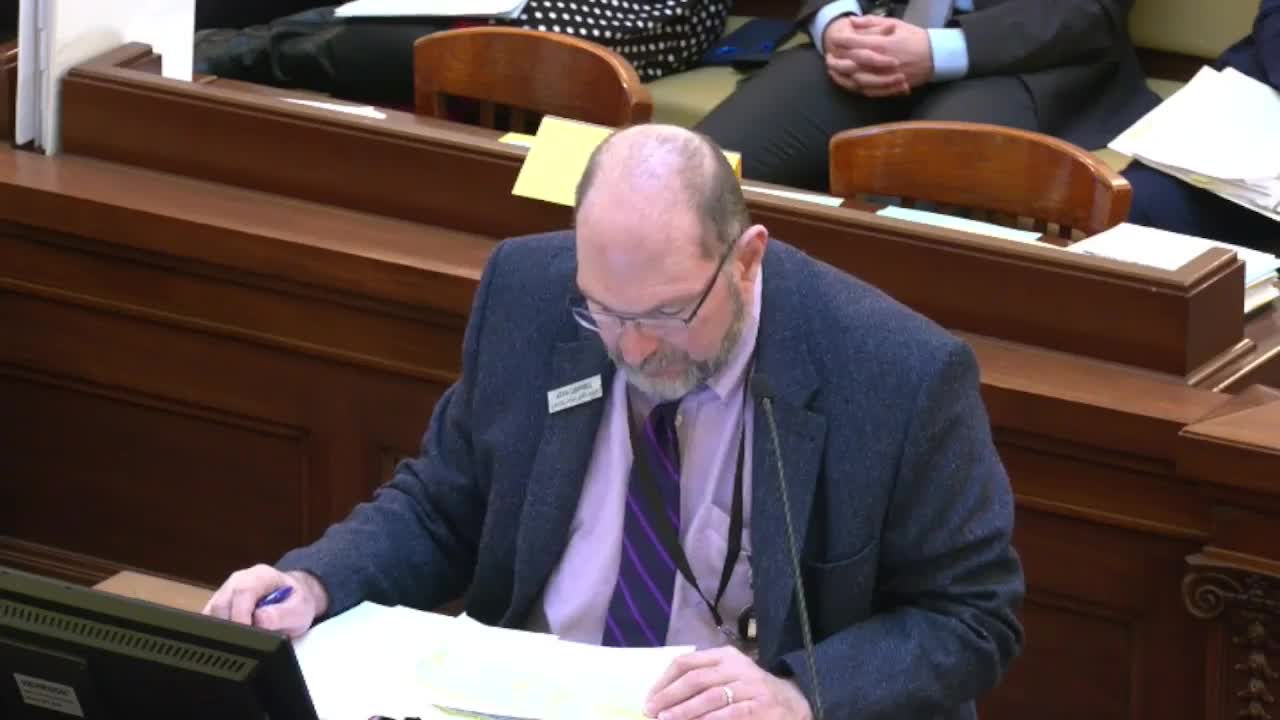Idaho committee approves $954500 for medical residencies and health education programs
February 14, 2025 | 2025 Joint Legislative Sessions, 2025 Legislative Sessions, Idaho
This article was created by AI summarizing key points discussed. AI makes mistakes, so for full details and context, please refer to the video of the full meeting. Please report any errors so we can fix them. Report an error »

On February 14, 2025, the Joint Finance-Appropriations Committee (JFAC) of the Idaho Legislature convened to discuss significant funding allocations for health education programs and independent living initiatives. The meeting highlighted the state's commitment to enhancing medical residency programs and supporting individuals with disabilities.
A key focus of the meeting was the proposed budget for fiscal year 2026, which included a motion by Representative Pesky to allocate substantial funds for various medical residency programs. The motion proposed $240,000 for Eastern Idaho Medical Residencies, $420,000 for new family medicine residents and a fellow in Nampa, and additional funding for family medicine residencies in Pocatello, Burley, and Rupert. This funding aims to bolster the state's healthcare workforce, addressing the growing demand for medical professionals in Idaho.
The committee unanimously approved the motion, reflecting a strong bipartisan commitment to improving healthcare education and training in the state. The approval also included a provision for additional OBGYN fellowships, which underscores the need for specialized training in women's health within the family medicine residency framework.
In addition to healthcare funding, the meeting addressed the budget request from the State Independent Living Council (SILC). The council aims to promote independent living for individuals with disabilities. The proposed budget shift from dedicated funds to the general fund was discussed, with a net zero impact on overall appropriations. This shift is intended to cover health benefits and adjustments in the council's program maintenance, ensuring continued support for individuals seeking independence and integration into society.
The discussions during this meeting reflect Idaho's ongoing efforts to enhance its healthcare system and support vulnerable populations. As the committee moves forward, the approved funding will play a crucial role in shaping the future of medical education and independent living services in the state. The next steps will involve monitoring the implementation of these budget allocations and assessing their impact on the community.
A key focus of the meeting was the proposed budget for fiscal year 2026, which included a motion by Representative Pesky to allocate substantial funds for various medical residency programs. The motion proposed $240,000 for Eastern Idaho Medical Residencies, $420,000 for new family medicine residents and a fellow in Nampa, and additional funding for family medicine residencies in Pocatello, Burley, and Rupert. This funding aims to bolster the state's healthcare workforce, addressing the growing demand for medical professionals in Idaho.
The committee unanimously approved the motion, reflecting a strong bipartisan commitment to improving healthcare education and training in the state. The approval also included a provision for additional OBGYN fellowships, which underscores the need for specialized training in women's health within the family medicine residency framework.
In addition to healthcare funding, the meeting addressed the budget request from the State Independent Living Council (SILC). The council aims to promote independent living for individuals with disabilities. The proposed budget shift from dedicated funds to the general fund was discussed, with a net zero impact on overall appropriations. This shift is intended to cover health benefits and adjustments in the council's program maintenance, ensuring continued support for individuals seeking independence and integration into society.
The discussions during this meeting reflect Idaho's ongoing efforts to enhance its healthcare system and support vulnerable populations. As the committee moves forward, the approved funding will play a crucial role in shaping the future of medical education and independent living services in the state. The next steps will involve monitoring the implementation of these budget allocations and assessing their impact on the community.
View full meeting
This article is based on a recent meeting—watch the full video and explore the complete transcript for deeper insights into the discussion.
View full meeting